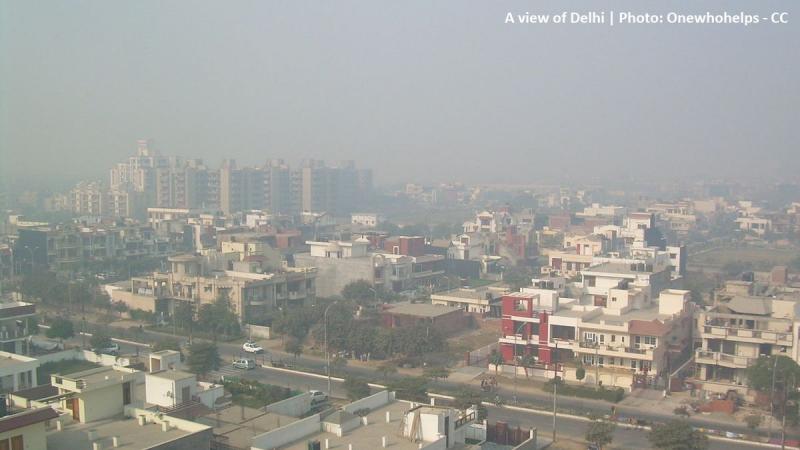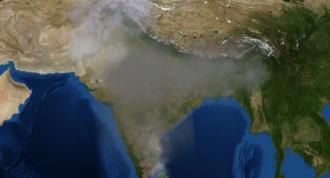
Delhi’s tussle with its deteriorating air quality is no secret. One episode that grabbed headlines was the ‘hazardous’ levels of PM2.5 (particulate matter with size less than 2.5 micrometres in diameter) soon after the 2016 Diwali celebrations, where a staggering 50 lakh kgs of firecrackers were burnt. Increased levels of PM2.5 can trigger smog—a mixture of fog and smoke—that decreases visibility to near zero. During Diwali of 2016, the PM2.5 levels reached closer to 1000 µg m-3 in some areas, 40 times higher than the standard recommended by the World Health Organisation. To avoid a repeat of this ordeal, the Supreme Court banned the sales of firecrackers for the next year’s Diwali. But, nothing changed in reality! So, was it really the firecrackers that were to be blamed, or were there more reasons for the catastrophe?
In a new study, to be published in the journal Aerosol and Air Quality Research, researchers from the Indian Institute of Technology Bhubaneswar, take a closer look at various factors that caused air pollution during Diwali of 2016. Although people debated over multiple ideas that could have led to the hazardous air quality, like vehicular emissions, firecrackers, and crop burning in neighbouring states, this study has scientifically pointed out the combination of factors that led to the catastrophe.
“Air pollution is an important issue of concern for many cities including New Delhi. It may be attributed to the growth of the city and the associated activities, or the pollutants from far away sources that get carried to the city by the moving air or environmental conditions unfavourable for dispersion of pollutants. New Delhi is unique in this respect as all factors mentioned above combine to have potential high pollution episodes over the city”, says Prof. Vinoj V from IIT Bhubaneswar, who is an author of the study, in an interview with Research Matters.
The city’s pollution problem particularly aggravates during the winters due to low wind speeds and temperature inversion—an atmospheric phenomenon where the temperature of the air near the ground surface is lower than that in the higher atmosphere. Hence, the released pollutants are trapped in the lower layers of the atmosphere and are not dispersed enough. Since Diwali often falls during the start of winter, it adds to the severe pollution that the city is already experiencing.
The present study reveals that the burning of stubbles—cut stalks of cereal plants left after the grain is harvested— in regions around Delhi exacerbated the severe deterioration in the air quality during the 2016 Diwali. Since 2000, crop burning has been increasing at an alarming rate of 25%, which is affecting Delhi’s air quality far more than the bursting of firecrackers or the emissions from vehicles, according to the researchers.
“Emissions during Diwali do deteriorate the air quality in the city. However, the question is by how much? We tried to look at the average pollution condition during Diwali and then compared the variability in pollution over the years. Our analysis showed that the maximum change possible due Diwali emissions alone on PM2.5 were only 20 to 40%. However, the pollution levels were about 60 to 140% above the expected levels during 2016”, explains Prof. Vinoj on their findings.
Who exactly is the culprit then? It is the crop burning that happens in the states of Punjab and Haryana, located to the northwest of Delhi, say the authors.
“Since we have already considered the background levels due to Diwali, our analysis showed that those days with high pollution were related to the fires observed in the upwind direction (northwest of Delhi) around the same period. We conclude that the pollution levels almost doubled due to the transport of pollutants from the crop burning,” says Dr Vinoj.
The researchers analysed the air quality of the National Capital Region of Delhi from the year 2000 to 2016. The work carried out was primarily based on satellite measurements and therefore the authors urge for more detailed local source distribution studies.
The authors say that although addressing local pollution sources help, they will not be of much use unless we solve the more significant problem of crop/biomass burning. “This is also the reason why studies are showing that the odd-even rule in Delhi may not have worked”, points out Prof. Vinoj. If banning firecrackers and bringing down the number of vehicles are not solving Delhi’s predicament, what could?
“The real success in improving Delhi’s air will require a coordinated effort on a regional scale including those at north-western upwind regions,” he signs off.






